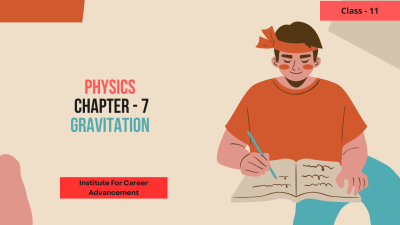In Class 12 physics, Wave Optics takes you on a journey to explore the fascinating world of light beyond the ray model. Here's what you'll delve into:
Core Concepts:
Light as a Wave: This course challenges the ray optics view of light and introduces the concept of light as a wave phenomenon. You'll learn how light waves exhibit properties like wavelength, frequency, and amplitude, similar to waves on water. Understanding these properties is crucial for explaining various wave optics phenomena.
Interference: Wave optics unveils the intriguing phenomenon of interference. Light waves can interact with each other, either canceling each other out (destructive interference) or strengthening each other (constructive interference). You'll explore the conditions that lead to these effects and learn how they can be observed in experiments like Young's double-slit experiment.
Diffraction: Another captivating phenomenon you'll encounter is diffraction. Unlike ray optics, which predicts light traveling in straight lines, wave optics explains how light can bend around corners or spread out when passing through narrow openings. Understanding diffraction plays a crucial role in explaining the behavior of light in various situations.
Polarization: Light waves can also exhibit polarization, a property where the vibrations of the electric field occur in a specific plane. You'll explore different types of polarization and how it can be used in various applications.
Applications: Wave optics isn't just theoretical. You'll learn how these concepts are applied in various fields like:
Explaining the colors of thin films: The beautiful colors seen in soap bubbles or oil slicks can be understood through wave optics principles.
Optical instruments: Certain phenomena like diffraction gratings used in spectroscopes rely on wave optics principles.
Modern technologies: Wave optics plays a role in understanding the behavior of light in lasers and optical fibers, which have numerous applications in communication and technology.
Going Beyond Ray Optics:
The course will explore the limitations of ray optics and how wave optics provides a more comprehensive understanding of light behavior. You'll learn that while ray optics is a valuable tool for many situations, wave optics is necessary to explain certain phenomena.
Learning Resources:
Your Class 12 textbook will be the primary resource. Here are some additional tips to enhance your learning:
Interactive simulations: Visualize wave phenomena like interference and diffraction through online simulations.
Animations: Animations can help visualize how light waves interact and produce interference patterns.
Practice problems: Solving problems involving calculations of wavelength, wave interactions, and applications of wave optics will solidify your understanding.
By understanding Wave Optics, you'll gain valuable knowledge about the wave nature of light and its diverse implications. This knowledge opens doors to understanding various phenomena in the world around you and the principles behind many modern technologies.
দ্বাদশ শ্রেণীর পদার্থবিজ্ঞানে, ওয়েভ অপটিক্স আপনাকে রশ্মি মডেলের বাইরে আলোর আকর্ষণীয় জগৎ অন্বেষণ করার জন্য একটি যাত্রায় নিয়ে যায়। আপনি যা অনুসন্ধান করবেন তা এখানেঃ
মূল ধারণাগুলিঃ
তরঙ্গ হিসাবে আলোঃ এই কোর্সটি আলোর রশ্মি আলোকবিজ্ঞানের দৃষ্টিভঙ্গিকে চ্যালেঞ্জ করে এবং তরঙ্গের ঘটনা হিসাবে আলোর ধারণাটি প্রবর্তন করে। আপনি শিখবেন কিভাবে আলোর তরঙ্গ তরঙ্গদৈর্ঘ্য, ফ্রিকোয়েন্সি এবং প্রশস্ততার মতো বৈশিষ্ট্য প্রদর্শন করে, যা জলের তরঙ্গের অনুরূপ। বিভিন্ন তরঙ্গ আলোকবিদ্যার ঘটনা ব্যাখ্যা করার জন্য এই বৈশিষ্ট্যগুলি বোঝা অত্যন্ত গুরুত্বপূর্ণ।
হস্তক্ষেপঃ তরঙ্গ আলোকবিজ্ঞান হস্তক্ষেপের কৌতূহলী ঘটনাকে উন্মোচন করে। হালকা তরঙ্গগুলি একে অপরের সাথে মিথস্ক্রিয়া করতে পারে, হয় একে অপরকে বাতিল করে (ধ্বংসাত্মক হস্তক্ষেপ) বা একে অপরকে শক্তিশালী করে। (constructive interference). আপনি এই প্রভাবগুলির দিকে পরিচালিত করে এমন পরিস্থিতিগুলি অন্বেষণ করবেন এবং শিখবেন যে কীভাবে এগুলি ইয়ং-এর ডাবল-স্লিট পরীক্ষার মতো পরীক্ষায় পর্যবেক্ষণ করা যেতে পারে।
বিচ্ছুরণঃ আরেকটি চিত্তাকর্ষক ঘটনা যা আপনি সম্মুখীন হবেন তা হল বিচ্ছুরণ। রশ্মি আলোকবিজ্ঞানের বিপরীতে, যা সরলরেখায় আলো ভ্রমণের পূর্বাভাস দেয়, তরঙ্গ আলোকবিজ্ঞান ব্যাখ্যা করে যে কীভাবে আলো কোণের চারপাশে বাঁকাতে পারে বা সংকীর্ণ খোলার মধ্য দিয়ে যাওয়ার সময় ছড়িয়ে পড়তে পারে। বিচ্ছুরণ বোঝা বিভিন্ন পরিস্থিতিতে আলোর আচরণ ব্যাখ্যা করতে গুরুত্বপূর্ণ ভূমিকা পালন করে।
মেরুকরণঃ হালকা তরঙ্গগুলি মেরুকরণও প্রদর্শন করতে পারে, এমন একটি বৈশিষ্ট্য যেখানে বৈদ্যুতিক ক্ষেত্রের কম্পন একটি নির্দিষ্ট সমতলে ঘটে। আপনি বিভিন্ন ধরনের মেরুকরণ এবং কীভাবে এটি বিভিন্ন প্রয়োগে ব্যবহার করা যেতে পারে তা অন্বেষণ করবেন।
প্রয়োগঃ তরঙ্গ আলোকবিজ্ঞান কেবল তাত্ত্বিক নয়। আপনি শিখবেন কিভাবে এই ধারণাগুলি বিভিন্ন ক্ষেত্রে প্রয়োগ করা হয় যেমনঃ
পাতলা ফিল্মের রঙ ব্যাখ্যা করাঃ সাবানের বুদ্বুদ বা তেলের টুকরোগুলিতে দেখা সুন্দর রঙগুলি তরঙ্গ আলোকবিজ্ঞানের নীতির মাধ্যমে বোঝা যায়।
অপটিক্যাল যন্ত্রঃ স্পেকট্রোস্কোপে ব্যবহৃত বিচ্ছুরণ গ্র্যাটিংগুলির মতো কিছু ঘটনা তরঙ্গ আলোকবিজ্ঞানের নীতির উপর নির্ভর করে।
আধুনিক প্রযুক্তিঃ তরঙ্গ আলোকবিজ্ঞান লেজার এবং অপটিক্যাল ফাইবারে আলোর আচরণ বোঝার ক্ষেত্রে ভূমিকা পালন করে, যার যোগাযোগ এবং প্রযুক্তিতে অসংখ্য প্রয়োগ রয়েছে।
রে অপটিক্সের বাইরে যাওয়াঃ
কোর্সটি রশ্মি আলোকবিজ্ঞানের সীমাবদ্ধতাগুলি এবং তরঙ্গ আলোকবিজ্ঞান কীভাবে আলোর আচরণ সম্পর্কে আরও ব্যাপক ধারণা প্রদান করে তা অন্বেষণ করবে। আপনি শিখবেন যে রশ্মি আলোকবিদ্যা অনেক পরিস্থিতির জন্য একটি মূল্যবান হাতিয়ার হলেও, নির্দিষ্ট কিছু ঘটনা ব্যাখ্যা করার জন্য তরঙ্গ আলোকবিদ্যা প্রয়োজন।
শেখার সংস্থানঃ
আপনার দ্বাদশ শ্রেণির পাঠ্যপুস্তক হবে প্রাথমিক সম্পদ। আপনার শেখার উন্নতি করতে এখানে কিছু অতিরিক্ত টিপস দেওয়া হলঃ
ইন্টারেক্টিভ সিমুলেশনঃ অনলাইন সিমুলেশনের মাধ্যমে হস্তক্ষেপ এবং বিচ্ছুরণের মতো তরঙ্গের ঘটনাগুলি কল্পনা করুন।
অ্যানিমেশনঃ অ্যানিমেশনগুলি আলোর তরঙ্গগুলি কীভাবে মিথস্ক্রিয়া করে এবং হস্তক্ষেপের নিদর্শন তৈরি করে তা কল্পনা করতে সহায়তা করতে পারে।
অনুশীলনের সমস্যাঃ তরঙ্গদৈর্ঘ্যের গণনা, তরঙ্গ মিথস্ক্রিয়া এবং তরঙ্গ আলোকবিজ্ঞানের প্রয়োগের সাথে জড়িত সমস্যাগুলি সমাধান করা আপনার বোধগম্যতাকে দৃঢ় করবে।
তরঙ্গ আলোকবিদ্যা বোঝার মাধ্যমে, আপনি আলোর তরঙ্গ প্রকৃতি এবং এর বৈচিত্র্যময় প্রভাব সম্পর্কে মূল্যবান জ্ঞান অর্জন করবেন। এই জ্ঞান আপনার চারপাশের বিশ্বের বিভিন্ন ঘটনা এবং অনেক আধুনিক প্রযুক্তির পিছনের নীতিগুলি বোঝার জন্য দরজা খুলে দেয়।



















